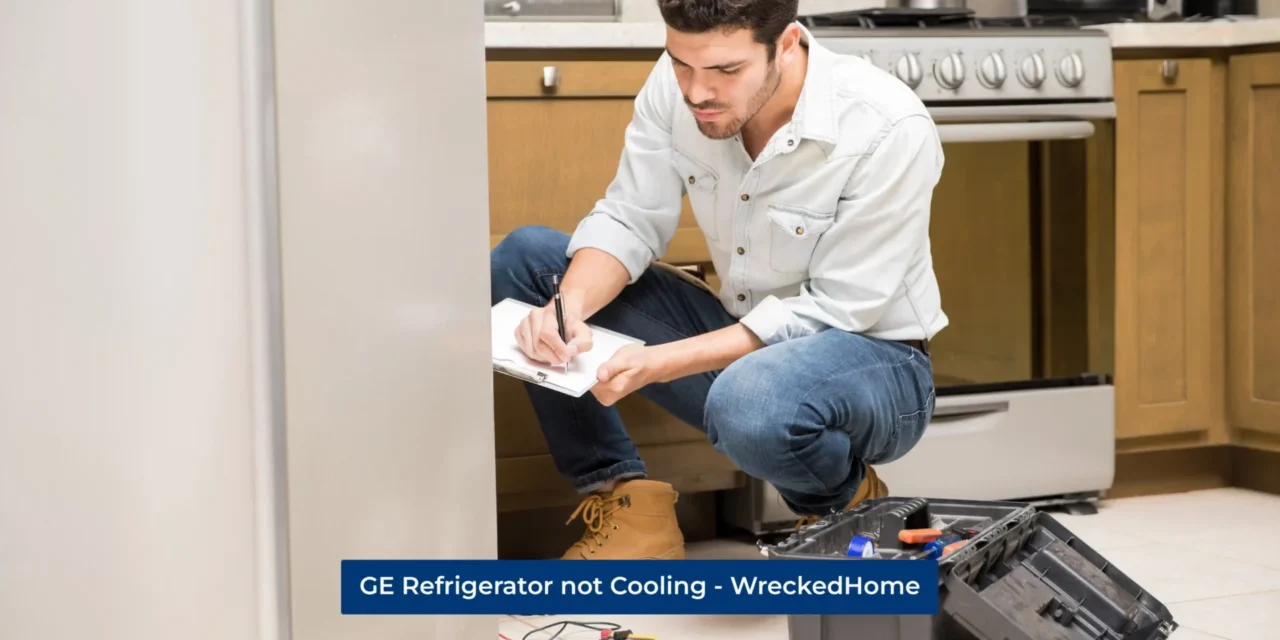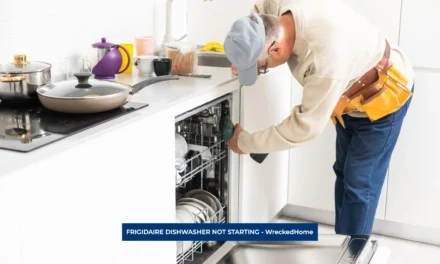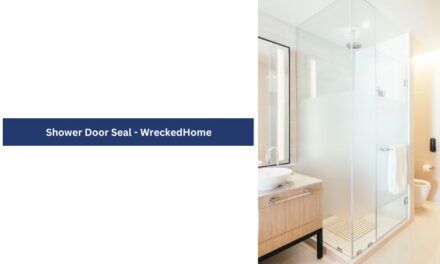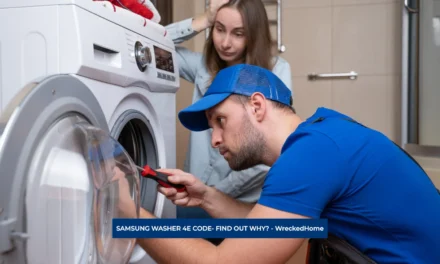You must be worried if you are stuck experience your “GE refrigerator not cooling”. Refrigerators are true kitchen companions for storing meals day and night. Nicely cold refrigerators keep food fresh and beverages cold. But we often underestimate their presence by ignoring routine care and maintenance. Sometimes wear and tear of the components also makes them bad leading. This can lead to “no cooling”. If your GE refrigerator has also stopped cooling then this detailed guide is for you. Here we will discuss all the possible causes of this problem with their practical solutions. So, let’s dive into the details.
1. Faulty Thermostat
A faulty thermostat is one of the biggest reasons of the refrigerator problem, GE refrigerator not cooling.
This is because the thermostat is responsible for sensing the temperature inside the appliance and then sending the necessary signals to activate or deactivate the cooling mechanisms. If the thermostat is malfunctioning, it might not accurately gauge the temperature. Or it might fail to signal other parts to operate. The result is a fridge that’s too warm or too cold, leading to spoilage or freezing.
How to fix it:
Start by checking the thermostat settings. If everything appears correct then rotate the thermostat from the lowest to the highest setting, listening for a click. If you hear one, it’s likely functioning. If not, it may need replacement. Next, test the thermostat using a multimeter. If it fails the test, it will need to be replaced. Depending on the model, you may be able to replace this yourself, or you might require a technician.
| GE Refrigerator not Cooling – Causes | Solutions |
| Faulty Thermostat | Check settings – Test with a multimeter – Replace if necessary |
| Blocked Condenser Coils | Turn off and unplug – Locate coils (back or underneath) – Clean coils every 6 months |
| Faulty Evaporator Fan | Check for obstructions – Replace if noisy or not running |
| Defective Start Capacitor | Unplug the refrigerator – Locate and replace with a matching capacitor |
| Malfunctioning Compressor | Check for noise or overheating – Consider professional replacement if necessary |
| Leaking Refrigerant | Hire a professional for identification and repair of leaks – Recharge refrigerant |
| Defective Door Seals | Clean seals – Check for wear or damage – Apply petroleum jelly – Replace if necessary |
| Overloading | Organize fridge – Use clear bins – Practice “first in, first out” – Avoid over-packing |
Visit our store for 10% off our Tools here.
2. Faulty Evaporator Fan
The evaporator fan has a special significance to keep the GE refrigerator cold. It is mostly found in the freezer compartments and has a simple role. First, you must learn that refrigerators operate by means of cold air circulation. The evaporator fan ensures that the cool air generated by the evaporator coils is efficiently distributed throughout both the freezer and the refrigerator section. Thus, it helps in maintaining it.
How to fix it:
- Check for signs of ice build-up or obstructions that might be hindering the fan.
- Plug the fridge back in and observe if the fan runs smoothly. If there’s noise or the fan doesn’t run, it may be time for a replacement.
- Replacing the fan generally involves removing the back panel inside the freezer and swapping out the fan. Consider professional assistance if unsure.
3. Defective Start Capacitor
The start capacitor acts as the vital spark plug for the compressor, the powerhouse of a refrigerator’s cooling system. This capacitor momentarily stores and releases a surge of energy, giving the compressor the necessary boost to kick-start its cycle. However, if the capacitor becomes faulty, this crucial initiation fails, leaving the compressor dormant and the refrigerator’s cooling mechanism compromised. One distinct symptom of a struggling capacitor is a repetitive clicking noise emanating from the refrigerator’s rear, signaling its unsuccessful attempts to power the compressor.
How to fix it:
When experiencing issues with a refrigerator’s start capacitor, it’s essential to approach the situation with caution and precision. First, always unplug the refrigerator to ensure safety. The capacitor, usually situated near the compressor at the appliance’s rear, can be located and assessed. While replacing a faulty capacitor, ensure that the new one matches the original’s specifications.
4. Malfunctioning Compressor
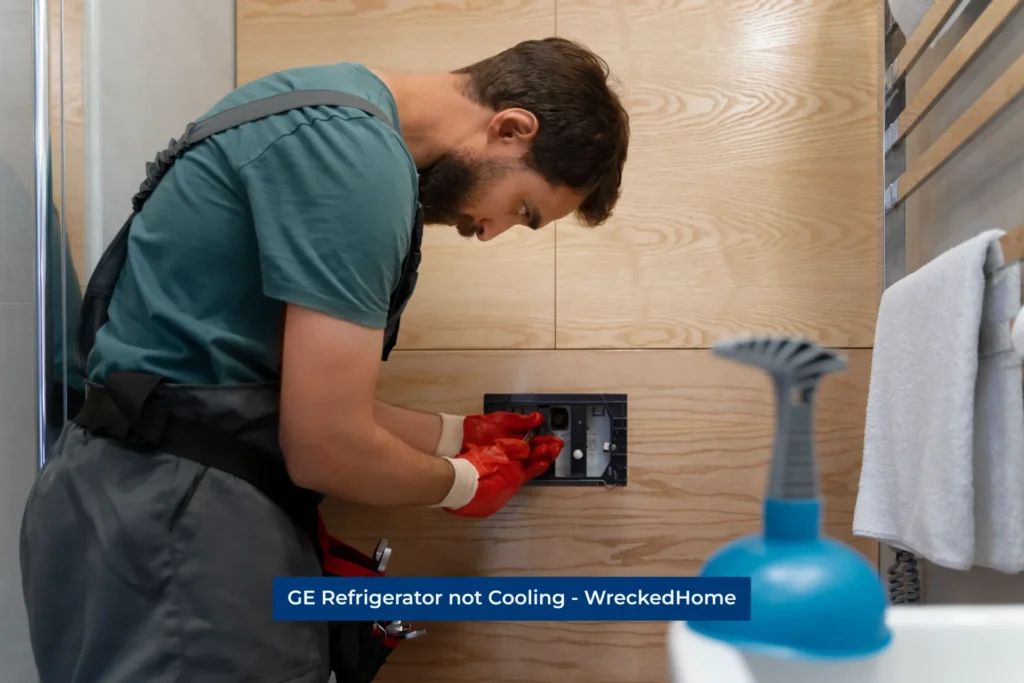
Image by Freepik
Just like other components of the GE refrigerator, the compressor also plays a main role in cooling. By compressing and circulating the refrigerant, it facilitates in the refrigeration cycle that allows the appliance to cool efficiently. Similarly, the compressor increases the pressure of the refrigerant gas – causing it to become hot. This hot gas then transfers to the condenser coils where heat is released in the surrounding and it transforms back into the liquid. Again, this refrigerant moves back to the evaporator coil – absorb heat and vaporizes once again. This cycle continues as long as the temperature is maintained to the desired level.
This extensive operation is the responsibility of compressor and in a faulty condition, you hear noise and vibrations. Similarly, it makes frequent cycling causing overheating that clearly shows a defect in it.
How to fix it:
Fixing a malfunctioning compressor at home is tricky. You can check the continuous humming sound followed by a “click” during the task. Also, touch it to see whether it is hot or overworked. If this happen, then consider replacement of the compressor. You can do it at your place if you have prior experience and the required tools. Otherwise, hiring a professional to replace compressor will work fine.
5. Blocked Condenser Coils
Blocked condenser coils in GE refrigerators are one of the most important causes of the issue GE refrigerator not cooling. This is due to the significant role of coil n refrigeration process. The coils serve as the heart of refrigerators’ cooling system. They work as heat exchanges and releases the heat absorbed from the refrigerators interior to external environment.
Over time, environmental elements like dust, pet hair or debris gather around the condenser coils. This accumulation works as a blanket around coils and, they lose their ability to effectively release heat. As a result, your GE refrigerator does not dissipate heat. This impacts the cooling efficiency of your refrigerator.
How to fix it:
Unblocking condenser coils is easy but tricky. The main system of the refrigerator is exposed in front of you. So, safety comes first – turn off and unplug the refrigerator. Next locate condenser coils. You can find them either at the back or underneath of the refrigerator. Do proper cleaning of the coils after locating them. You can do this using a brush or vacuum. Just be gentle and remove dust or debris. Using specialized coil brush can give effective cleaning as it penetrates deeper into the coils. You can also use a handled steamer for stubborn grime.
Your GE refrigerator not cooling issue will be resolved after this activity but don’t forget about it in the future. Do this cleaning job every 6 months to avoid complications in your GE refrigerator.
6. Defective Door Seals
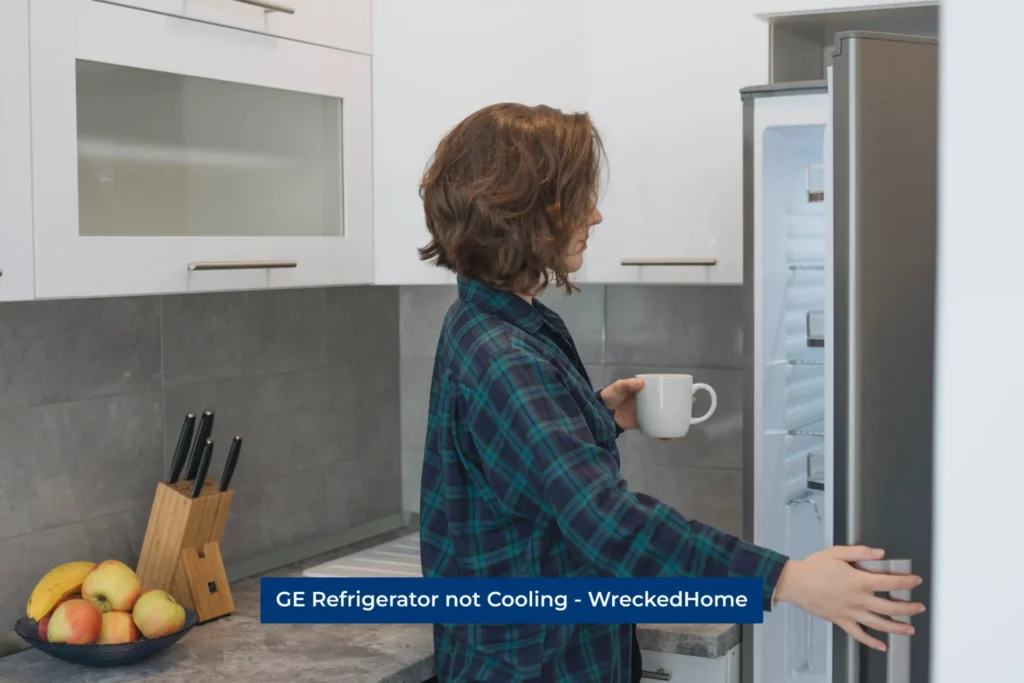
Image by Freepik
The door seals or gaskets ensure that the refrigerator doors close tightly, preventing warm external air from entering and cold internal air from escaping. Over time, these seals can wear out, crack, or become deformed. When this happens, they fail to create a tight seal, leading to temperature fluctuations and increased energy consumption. The same door seal problem prevents fridge ice maker to work properly.
Signs of Worn or Damaged Seals:
- Visible Damage: Over time, door seals can develop cracks, splits, or tears. In some cases, they might become brittle or hard, losing their flexibility.
- Deformation: Gaskets might become deformed or misshapen, often due to frequent usage, accidental collisions, or exposure to harsh cleaning chemicals. A deformed seal might have gaps when the door is closed, allowing air to seep through. So, if you notice these signs instantly get that the gasket of your GE refrigerator is bad.
- Condensation or Frost: If you notice unusual moisture or frost build-up inside the refrigerator, especially near the door areas, then it might be indicative of a seal that’s not sealing properly.
- Difficulty in Closing: If the doors don’t shut smoothly or if they require an extra push, it could be due to a gasket issue.
How to fix it:
Fixing defective door seals in your GE refrigerator is an easy task. First, clean the seals with warm, soapy water to remove any debris or sticky residue. You can also apply a thin layer of petroleum jelly to the gasket to ensure a smoother seal.
Additionally, check for visible wear, tears, or deformities. A simple test is to close the door on a dollar bill. If you can pull it out easily, the seal might be weak.
Lastly, if required, purchase a replacement seal, ensuring it matches your refrigerator’s model. Install according to the manufacturer’s guidelines.
7. Overloading
Packing the fridge with too many items restricts airflow, which is crucial for maintaining consistent temperatures. Overloaded shelves or blocked vents can trap cold air in certain areas. It prevents it from reaching other parts. This not only causes uneven cooling but can strain other components because they work harder to maintain the desired temperature.
How to fix it:
Work on the organization of your refrigerator. You can use clear storage bins or containers to compartmentalize items.
Secondly, adopt a “first in, first out” rule. This means using older items first to prevent them from getting pushed to the back and forgotten. Ensure the fridge isn’t packed too tightly as cold air needs space to circulate efficiently.
If you will follow these simple tips, your problem of overloading will be solved.
Conclusion – GE Refrigerator not Cooling
In conclusion, the problem of your “GE refrigerator not cooling” can be a source of frustration and inconvenience. But, it doesn’t have to be a permanent problem. You can come out of this situation by following the solutions mentioned above.
For any repairs, installations, builds, or questions; We recommend you to hire a professional. Find A Pro Near You Here!
Thumbnail By: Image by tonodiaz on Freepik

